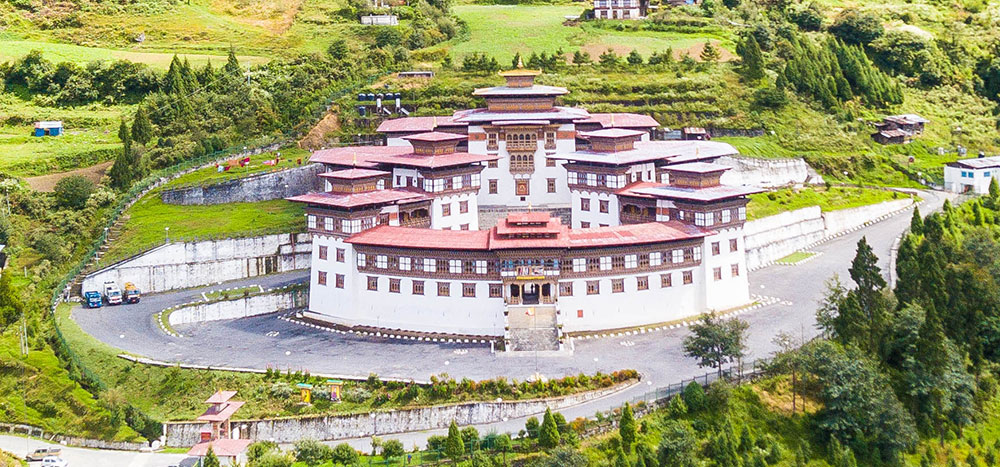During the 14th century, the revered Tibetan Buddhist master Thang-Thong Gyalpo graced the Chapcha area, where the old Dzong now stands, with his presence. He settled in Tha-dra Goenpa for an extended period, during which he conceived the ambitious idea of constructing an iron bridge over the Wangchhu, now the site of the Chukha Hydropower plant. However, his plans faced opposition from Semo Larim, a formidable local spirit renowned for her strength. Through his persuasive abilities, Thangtong Gyalpo convinced the spirit to marry him and requested her aid in temporarily halting the flow of the Wangchhu to facilitate bridge construction. Remarkably, the spirit complied, holding the entire river in her mouth until the bridge was completed. In homage to this extraordinary event, the spirit was revered as the guardian deity of the area, leading to naming the region ‘Chukha,’ symbolizing ‘Chu’ for the river and ‘Kha’ for the mouth.
Following the consecration of the bridge, the lama subdued and enlisted the nearby spirits, tasking them with safeguarding the dharma and ensuring the welfare of the local populace. These spirits, once feared as harbingers of misfortune, disease, and adversity, were instructed to cease their negative influence and promote peace and prosperity among the people. A pact was forged, with the spirits pledging to avoid causing harm. Since then, they have upheld their promise, transitioning from dreaded entities to revered beings venerated by the community.
Chhukha shares borders with Thimphu and Paro to the North, Haa to the Northwest, Dagana to the East, and Samtse to the West, with its southern boundary aligning with the international border with India. Notably, Phuentsholing, Bhutan’s primary commercial center, lies at the southern tip of the Dzongkhag. Historically, under the dual government system, Chukha was directly governed by the central government. To oversee the southern region, the central government established a Penlop (regional governor) in Chapcha and a Paksamkha Gyadrung (Officer in charge of the area near India). During that era, Chukha played a pivotal role as a thoroughfare for Bhutanese travellers heading to India.
Consequently, during the reign of the 3rd Druk Desi Chogyal Minjur Tempa, a dzong was constructed at the current location of the Chhukha Power Plant Zangtogperlri. This fortress was named Chukha Dowa Dzong, signifying “defending against an attack or threat.” It served as a checkpoint for travellers entering and leaving the country, catering to those journeying to India and those arriving within Bhutanese borders.
Chhukha has been considered blessed since ancient times. Before the era of Buddha Sakyamuni, a certain King Doendup visited the region, a historical event recorded in Penlop Drakpa Jamtsho’s biography. Throughout history, eminent figures such as Guru Rinpoche, Thangtong Gyalpo, and Tsang Khenchen Jamyang Pelden Jamtsho bestowed blessings upon Chukha. Later, in the 18th century, Terton Drukda Dorji also graced the area with his presence.
Today, Chhukha plays a pivotal role in driving the country’s economy, chiefly due to the presence of the Chhukha Power Plant and the Tala Power Plant. Before 1975, the administrative center of the Dzongkhag was located in Chapcha. However, with the completion of the Chhukha Hydro Power Plant, the administrative headquarters were relocated to Tshimalakha, consequently raising the prominence of the name “Chhukha.” In 1987, a new monastic school (dratshang) was established.
Subsequently, in 2008, with financial backing from the Royal Government, construction of a new Dzong commenced and was finalized in 2011. The Dzong was consecrated on March 9, 2012, by His Holiness the 70th Je Khenpo, with the esteemed presence of Gyaltsuen Jetsun Pema Wangchuck. This Dzong was christened “Ngoedruptse,” translating to “the highest peak of blessing.”
Contributed by
Thukten Tenzin
BCSEA
Thimphu


